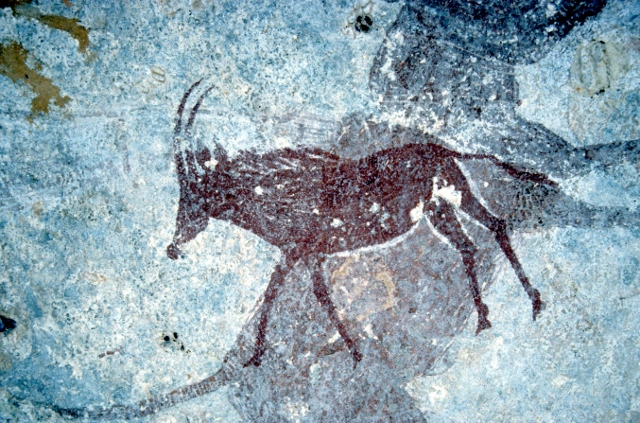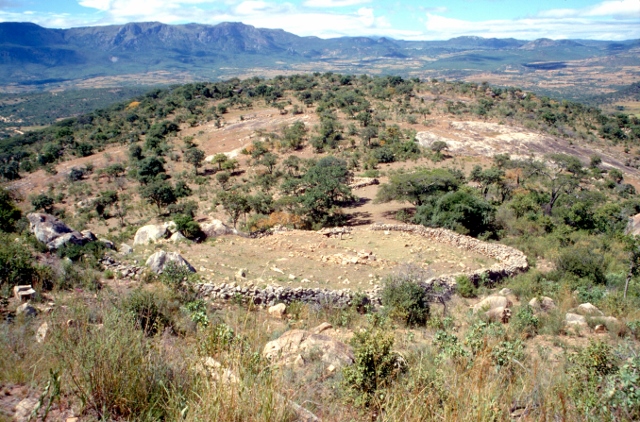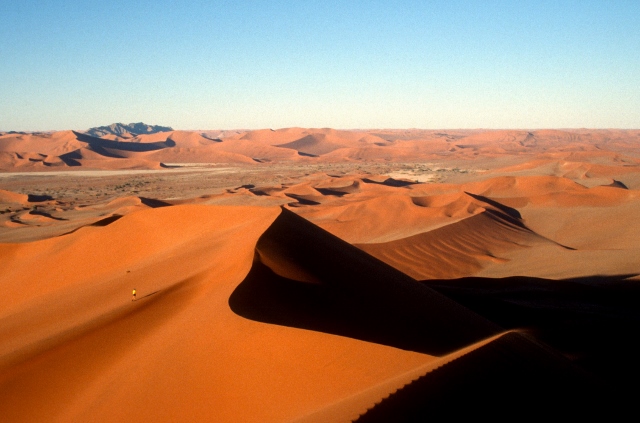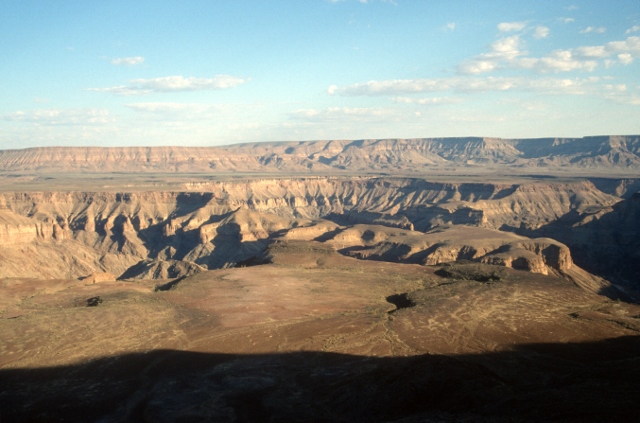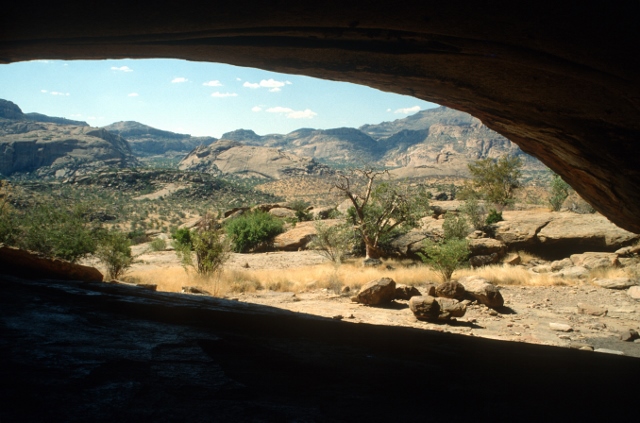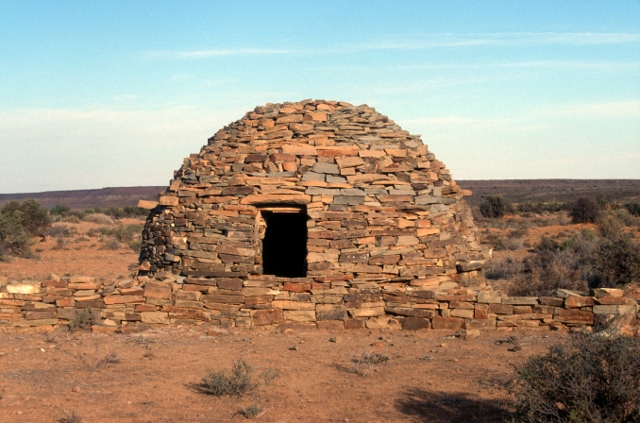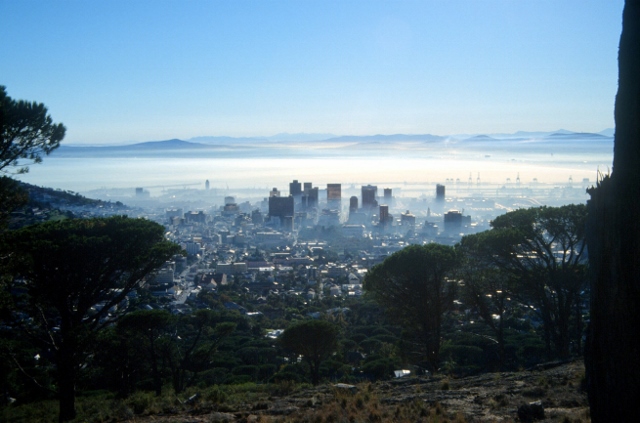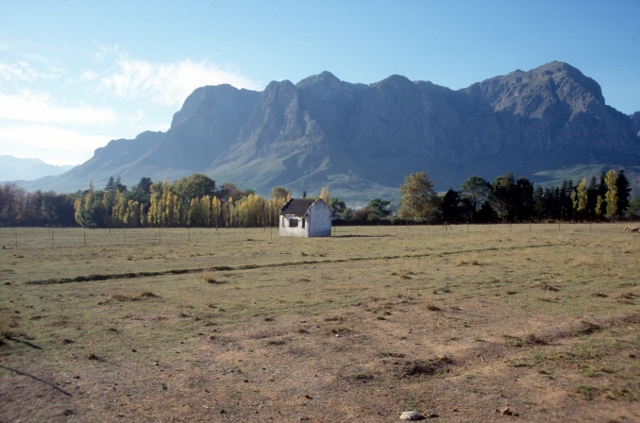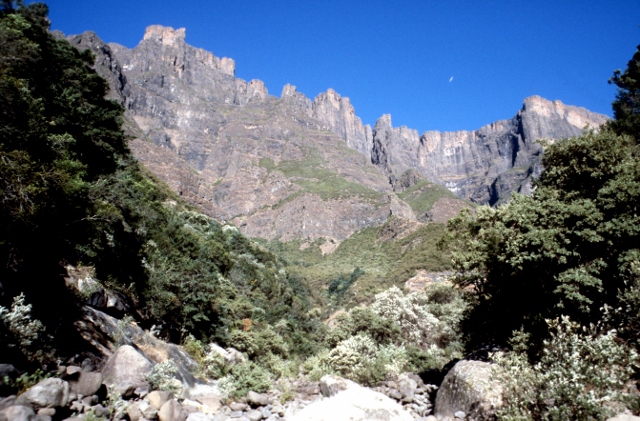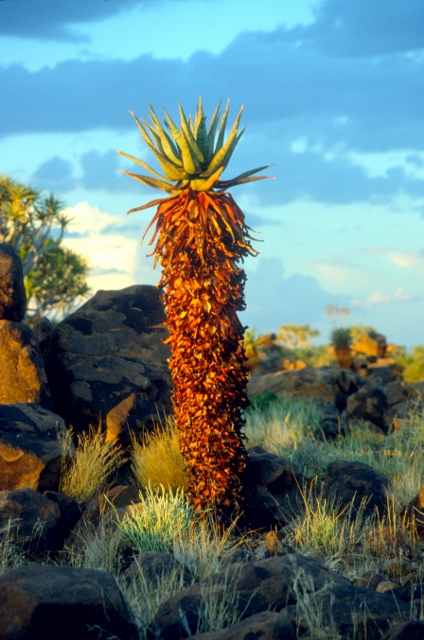
Having lived in Eastern Africa for a couple of years in the late 1980s, I simply had to come back to this fascinating continent. So when the opportunity presented itself in 1991 – I managed to negotiate eight weeks off with my employer -, I returned to where I had left, to Zimbabwe. To address some unfinished business, really. During my earlier trip, in 1989, I had discovered the fascinating rock paintings of the San people, commonly known as Bushmen, and seen some of the caves that contain those, in Southern Zimbabwe. But there were many more in the north of the country, and in the Eastern Highlands.
From Zimbabwe I flew to Namibia, to join a two-week camping tour along the highlights of that country – Sossusvlei, Skeleton Coast, Etosha National Park etc. Afterwards, I rented a car to do some exploration on my own, especially to the Brandberg area, where Namibia’s most famous rock paintings are located.
For the last leg of this trip I travelled overland to South Africa. With the intention to see as much as possible, and in particular visit as many rock painting sites as I could cram in – a bit of an obsession, I know. The first of those were in the Karoo, the area bordering Namibia. And after Cape Town, where I visited a long-lost uncle, and Stellenbosch, for some serious new world wine tasting, I continued, through the dispiriting Homelands that characterized the Apartheid situation in this country, to the Drakensberg in Central South Africa. For more rock paintings as well as some spectacular scenery, and for a quick visit to Lesotho.
During the trip I wrote home frequently, and from these letters I have now distilled the below diary, copiously accompanied by quite a few of the photos I took along the way – which were originally slides, subsequently scanned. Do note that my observations are from 1991, now thirty years ago. Things will have changed significantly, and so has the way we look upon that time, and the way we – I – would have observed and described things today.
Back to Harare
The first few days of my trip I spent in Harare, adressing one of the unfinished businesses – Shona sculptures – and visiting several markets and the tobacco auction.
Mashonaland
From Harare I went to the NE, to Mashonaland, one of the areas with a lot of caves containing rock paintings. I ended up in Mutoko, with its ‘exciting’ hotel.
Eastern Highlands
One of the most spectacular areas of Zimbabwe are the Eastern Highlands, where natural beauty is home to an impressive array of ruins.
the Namib Desert
Having arived in Windhoek, I joined a small-scale tour that headed south to Naukluft National Park and the dunes around Sossusvlei, before turning north again to end up in Swakopmund.
the Skeleton Coast and Etosha
The second part of the tour visited the north coast – Skeleton Coast -, and then went inland to the rock engravings of Twyfelfontein and Peet Albert’s Koppie. We finsihed with time on safari in Etosha National Park.
Namibia’s south
After the tour I rented a car and went to the south of namibia, see the sights around Luderitz, like the ghost town Kolmanskop, and near Keetmanshoop: the quiver tree forest and Fish River Canyon.
the White Lady
The last stop in Namibia was in the Brandberg area, where I admired the spectacular Bushmen rock paintings. Not only the well-known and famous White Lady and those in Phillips cave, but also from other, more remote shelters.
the Karoo
Next I spent a few days in the NW corner of South Africa, the Karoo, admiring scenery in Augrabies NP, and Brandvlei, as well as rock engravings and corbelled houses – very typical for this part of the country.
the Cederberg rock paintings
The Karoo, especially the Cederberg area, is home to lots of San people rock paintings, mostly located at private farms. I went to see two of those, Matjies River (nowadays called Stadsaal Rock) and Boontjieskloof.
Cape Town
In Cape Town I met up with long lost family, walked up Table Mountain, and enjoyed this wonderful city and its surroundings.
the Garden Route
The Garden Route is South Africa’s preeminient tourist circuit. I went from the Stellenbosch wine area through mostly mountainous scenery to caves and ostriches near Oudtshoorn, and to coastal Knysna.
the Homelands
Parts of South Africa are a lot less pretty. The Homelands, also called the Batustans, are a scandalous arrangement of the Apartheid regime to foster further segregation.
the Drakensberg
The last part of the journey goes to the Drakensberg, perhaps South Africa’s most spectacular scenery – especially if you manage to get on top – combined with the richest San rock paintings in a variety of gallery caves.

